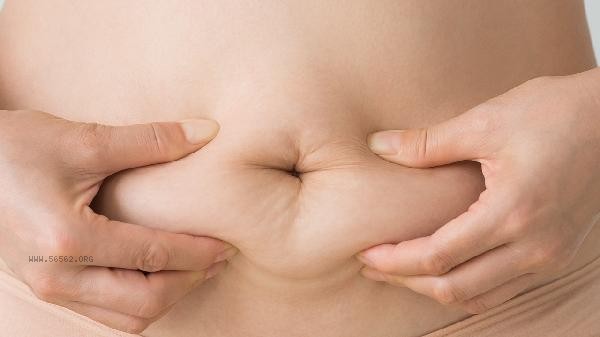Reducing excess fat on both sides of the waist and above the buttocks requires a combination of dietary control and targeted exercise. The main methods include adjusting dietary structure, strengthening core training, engaging in aerobic exercise, improving body habits, and ensuring adequate sleep.

1. Adjust dietary structure
Reduce intake of refined carbohydrates and high sugar foods, and replace white rice and flour with whole grains. Increase the intake of high-quality protein such as chicken breast, fish and shrimp, and ensure sufficient intake of vegetables and fruits daily. Control the amount of cooking oil, avoid fried foods, and use steaming as the main cooking method. It is recommended to drink at least 2000 milliliters of water per day and avoid sugary drinks. Nut based healthy fats can be supplemented appropriately, but single intake should be controlled.
2. Strengthen core training
Plate support can effectively activate the transverse abdominis muscle, hold for more than 30 seconds each time, repeat multiple sets. Side plank support focuses on exercising the waist muscles, alternating left and right 15 times each. The Russian rotation movement can strengthen the oblique muscle of the abdomen, and when combined with dumbbells to increase resistance, it has a better effect. Hip bridge exercise can simultaneously exercise the muscles of the buttocks and lower back, with 15 exercises per group and 3 exercises per day. Dead worm movements help establish core stability and are suitable for beginners with weak foundations to practice.
3. Engage in aerobic exercise
Maintain a heart rate between 60% and 70% of maximum heart rate during jogging, 3-4 times a week, for at least 30 minutes each time. Swimming, especially breaststroke, can comprehensively exercise the waist and hip muscles, and water resistance can enhance the shaping effect. Jump rope, as a high-intensity interval exercise, can quickly burn off waist and hip fat. Beginners can start with 1 minute per group. Elliptical machine training has less pressure on the knee joint and is suitable for weight loss in overweight individuals. Climbing stairs has a significant effect on exercising the gluteal muscles, and it is recommended to use a two-step approach.

Fourth, improve body posture habits
Avoid sitting for more than 1 hour, and stretch your waist and hips by getting up and moving for 5 minutes every hour. When standing, keep the core tight and imagine the feeling of the navel pressing against the spine. When sitting, place both feet flat on the ground and use a lumbar cushion to maintain physiological curvature. Consciously contract the gluteal muscles while walking, and increase the stride appropriately. When sleeping in a lateral position, place a pillow between your legs to reduce pressure on your lower back.
Fifth, ensure sufficient sleep
The recommended daily sleep time is 7-8 hours, and the secretion of growth hormone is most vigorous during the deep sleep stage. Avoid vigorous exercise or eating 2 hours before bedtime, and keep the bedroom environment dark and quiet. Establish a fixed schedule, with weekend fluctuations not exceeding 1 hour. Control your lunch break for 20-30 minutes to avoid entering the deep sleep phase. Lack of sleep can lead to an increase in cortisol and promote abdominal fat accumulation.

Reducing waist and hip fat requires continuous adherence for at least 8-12 weeks to see significant results. It is recommended to measure waist and hip circumference once a week to record changes. In terms of diet, you can try the Mediterranean dietary pattern and consume more anti-inflammatory foods such as olive oil and deep-sea fish. The exercise plan should be gradual, with a focus on cultivating exercise habits in the early stages and gradually increasing intensity in the later stages. Body posture correction requires long-term maintenance and can be combined with yoga and Pilates to improve body alignment. When encountering a plateau period, one can adjust their exercise routine or dietary ratio, and if necessary, consult a professional fitness coach or nutritionist to develop a personalized plan. Maintaining a positive attitude and transforming a healthy lifestyle into long-term habits is the key to maintaining a healthy physique.








Comments (0)
Leave a Comment
No comments yet
Be the first to share your thoughts!